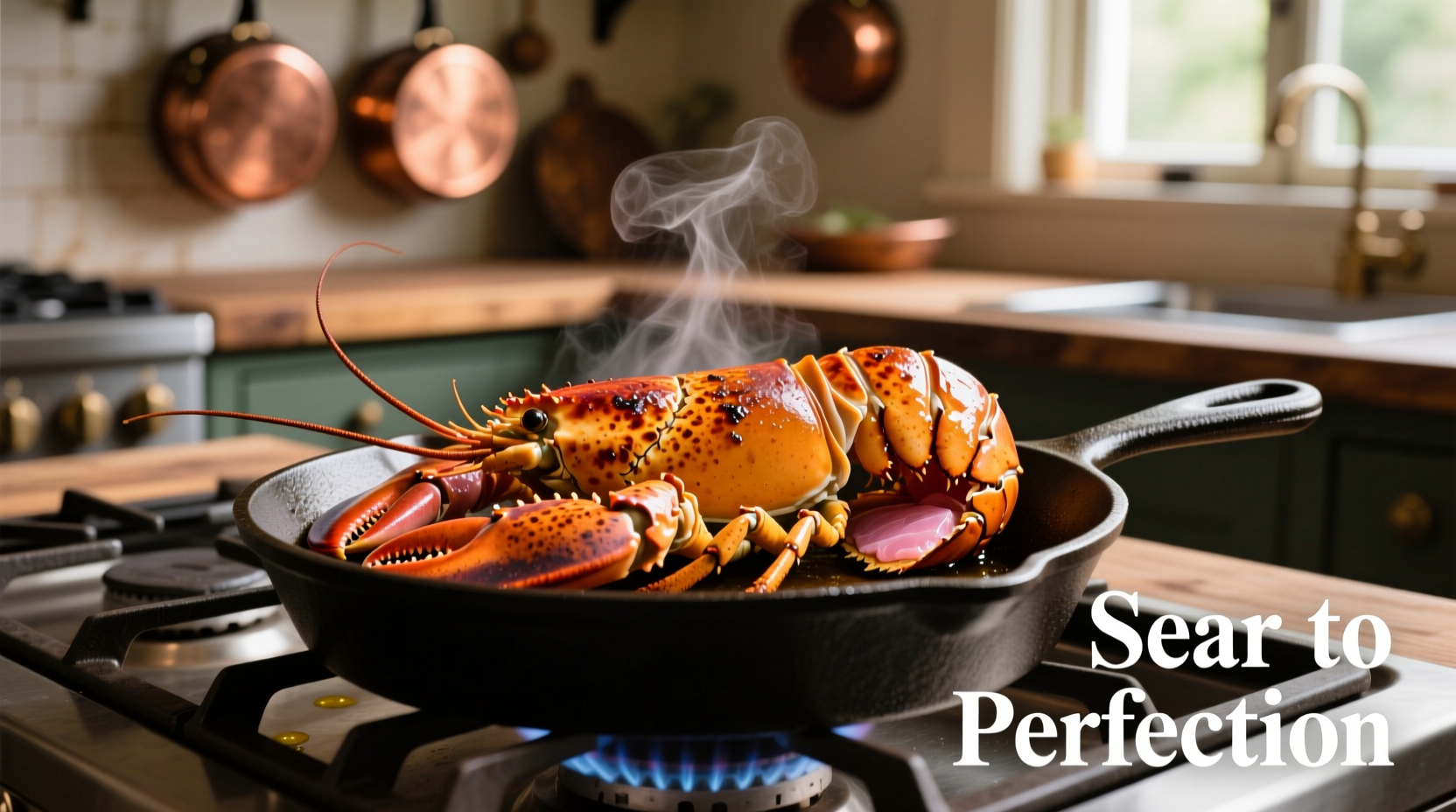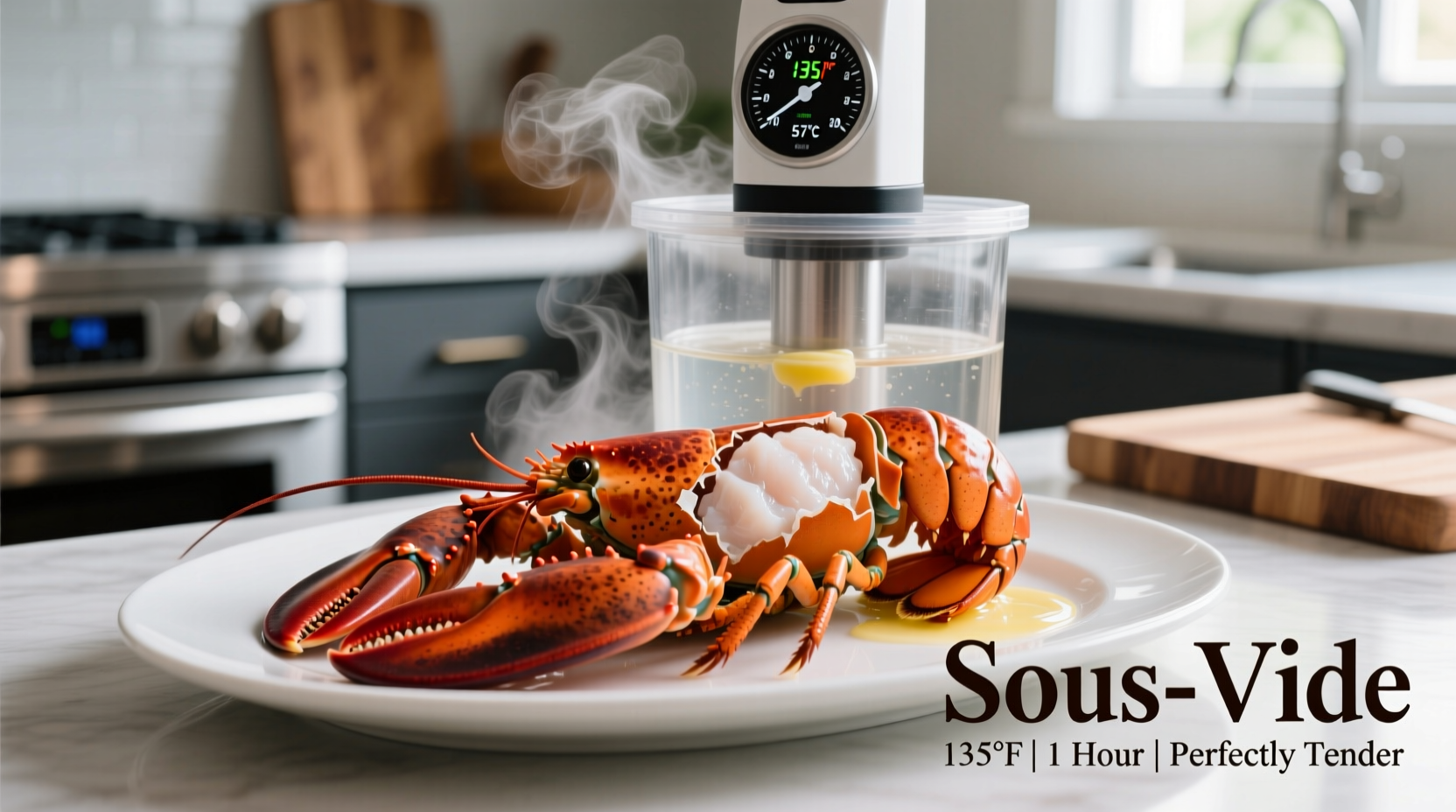Nothing impresses dinner guests like perfectly cooked lobster tails, and your stovetop is the secret weapon you already own. This guide delivers the fastest, most reliable method for cooking lobster tails without an oven or grill – just a skillet and 15 minutes. We'll cover professional techniques for splitting, searing, and testing doneness that prevent rubbery, overcooked results.
Selecting and Preparing Your Lobster Tails
Start with quality frozen lobster tails from reputable seafood suppliers like Seafood Watch. Opt for 5-8 oz "cold water" tails (Maine or Canadian) which have superior texture to warm-water varieties. Thaw overnight in the refrigerator – never at room temperature – to maintain food safety per FDA guidelines.
Before cooking, split tails lengthwise using kitchen shears:
- Cut through the top shell along the center line
- Expose the meat by gently separating shell halves
- Remove the dark intestinal vein if visible
- Pat dry thoroughly – moisture is the enemy of proper searing

Stovetop Cooking Technique
Heat 2 tablespoons of unsalted butter in a heavy skillet (cast iron or stainless steel) over medium-high heat until foaming subsides. Place tails shell-side down first – the shell protects delicate meat during initial cooking. Sear for 2-3 minutes until shell turns bright red.
Flip carefully using tongs and cook meat-side down for another 2-3 minutes. For thicker tails (over 6 oz), reduce heat to medium and cover pan for final minute to ensure even cooking without burning. The critical doneness indicator is internal temperature – insert an instant-read thermometer into the thickest part. Remove from heat at exactly 140°F as carryover cooking will raise it to the safe 145°F USDA minimum.
Pro Tips for Perfect Results
Season only after cooking – salt draws out moisture during searing. For enhanced flavor, add lemon slices and fresh thyme to the butter during the last minute of cooking. Never pierce the meat with utensils; flip only once to prevent juice loss. Remember that cooking time varies significantly by size:
| Lobster Tail Size | Total Cooking Time | Internal Temp Target |
|---|---|---|
| 4-5 oz | 6-8 minutes | 138°F |
| 6-7 oz | 8-10 minutes | 140°F |
| 8+ oz | 10-12 minutes | 140°F |
When Stovetop Cooking Shines (and When to Choose Alternatives)
This method excels for 1-2 servings with immediate cooking needs. The direct heat creates beautiful caramelization while containing cooking odors better than boiling. However, stove-top isn't ideal for large gatherings – oven roasting handles multiple tails more efficiently. Avoid this technique with thawed tails stored beyond 2 days, as freshness dramatically impacts texture.
Chef's note: Modern stove-top cooking evolved from traditional New England boiling methods. Early 20th century chefs discovered that dry-heat searing preserves more natural sweetness by preventing water absorption – a technique now standard in fine dining establishments worldwide.
Avoid These Common Mistakes
- Overcooking: Lobster continues cooking off-heat – remove at 140°F
- Wet tails: Inadequate drying causes steaming instead of searing
- High heat: Burns exterior before interior cooks
- Early seasoning: Salt extracts moisture during cooking
Serve immediately with lemon wedges and clarified butter for dipping. Pair with simple sides like roasted asparagus or garlic bread to let the lobster shine. Properly cooked tails should have opaque white meat that's firm yet yields slightly when pressed – never tough or stringy.
Can I cook frozen lobster tails directly on the stove?
No, always thaw frozen lobster tails in the refrigerator for 24 hours before cooking. Cooking from frozen causes uneven cooking and tough texture. The FDA recommends never thawing seafood at room temperature due to bacterial growth risks.
How do I know when lobster tails are done without a thermometer?
When properly cooked, lobster meat turns completely opaque white with no translucent areas. The meat should feel firm but still slightly springy when gently pressed. For 6-8 oz tails, this typically takes 8-10 minutes total cooking time over medium-high heat with proper searing technique.
Why is my stove-top lobster tail rubbery?
Rubbery texture almost always indicates overcooking. Lobster proteins tighten excessively when cooked beyond 145°F. Remove tails from heat at 140°F as carryover cooking will raise the temperature. Also ensure you're using fresh (not previously frozen multiple times) tails, as repeated freezing damages protein structure.
Should I leave the shell on when cooking lobster tails on stove?
Yes, keep the shell partially attached during cooking. Start shell-side down to protect the delicate meat from direct heat, then flip to finish cooking meat-side down. The shell acts as insulation, preventing overcooking while allowing beautiful caramelization. Remove shell completely only after cooking for serving.











 浙公网安备
33010002000092号
浙公网安备
33010002000092号 浙B2-20120091-4
浙B2-20120091-4